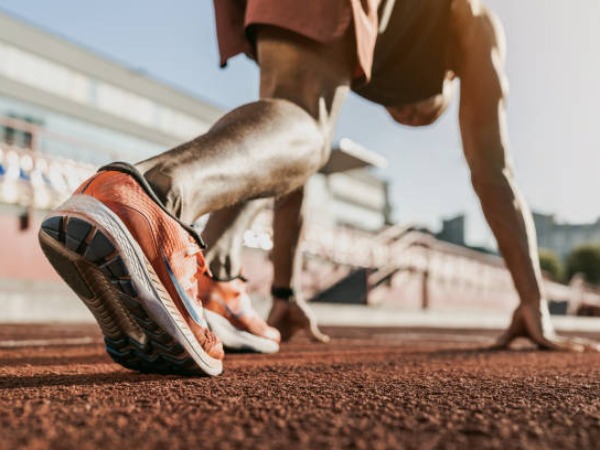views : 822
3 Min Read
Get right sports footwear, says athlete-turned-sports medicine specialist Khyati Vakharia
It is a growing market alright but the increasing number of end users of sports footwear in India have to be mindful of how they go about choosing pairs of shoes for their training and competition. While competitive athletes get support, the countless recreational athletes can do with professional insights before buying shoes for their sporting activity.
Towards the end of last year, University of Florida researchers identified runners wearing thick-heeled sneakers as more likely to get injured that those wearing flatter shoes. And a couple of months ago, a research team from the University of Bayreuth, Germany, found that 38 per cent of the 112 tested shoe models were either over- or under-designed.
Curiously, while a search leads the curious to an Indian Journal of Footwear Research, its website reveals that it has not published any issues. But while there is a need for more research and discussion on the technology and design of sports footwear, it is not as if Indians have not been researching the area.
Dr. Khyati Vakharia, a eight-time Pole Vault National Champion and erstwhile National Record holder turned Sports Medicine Physician in the Sports Injuries Centre in New Delhi’s Vardhman Mahavir Medical College and Safdarjung Hospital, has been researching the link between sports footwear and athletic performance among other things.
Her insights are critical when considered against the backdrop of the rapid growth of India’s market for sports footwear, fueled by an improving fitness and sports culture and focus on health and wellness. One study predicts that it would be a $1.71 billion in 2028 while another pegs it at $9.8 billion. And a third study projects the market size to ascend to 49.29 per cent in 2029.
“Advancing footwear technology has changed elite road running performances. This includes increase midsole thickness, with a long and stiff carbon plate, midsole foam and curved outsole,” she says. “Yet, while welcoming innovation World Athletics has placed certain restrictions to reduce risk of injury and balance with performance.”
Though she has focused on shoes for distance runners, some of her insights can be valuable even for the recreational athletes since it is not only competitive athletes but also recreational athletes who have to be mindful of the footwear. “I am aware that there are hundreds of thousands of road runners, and I keep hearing of them suffering injuries,” she says.
“The growing health consciousness and rising consumer spending power has increased the demand for sports and athletic footwear. But recreational athletes must not choose shoes with focus on brand image alone but after getting the right prescription,” she says, holding out a gentle warning for those obsessed with brand loyalty.
Dr. Khyati Vakharia recommends that an assessment of the athlete’s biomechanics must be done before choosing the appropriate footwear. “A gait analysis is paramount since it helps define the arch of the feet, the shape and mobility of the legs, the pressure points on the sole all offer critical insights, foot strike, ground contact time,” she says.
She reasons that an athlete’s injury history, especially plantar fasciitis, shin splints and knee or IT band pain, has to be taken into account when choosing shoes to not only prevent recurrence but also to avoid unnecessary over correction. “Ideally, athletes must rotate between two or three pairs of shoes during training and competition” she said.
Dr. Khyati Vakharia also says athletes must not wait till the shoes are frayed to change footwear. “Besides the lifespan of a pair of shoes, athletes must also look out for signs of new injuries and evolving biomechanics because of either strength gains or post injury,” she says, highlighting how a change of training surface or a shift in training loads will necessitate change of shoes.
A gymnast before she took to Pole Vault, she points out that every shoe can cause injury and athletes must always follow footwear prescription. “There is no one fix for all, and athletes and their support staff must remember not to try to fix what is not broken,” she says, summing up some take-home points for athletes and support staff, not to speak of the sports footwear industry.
